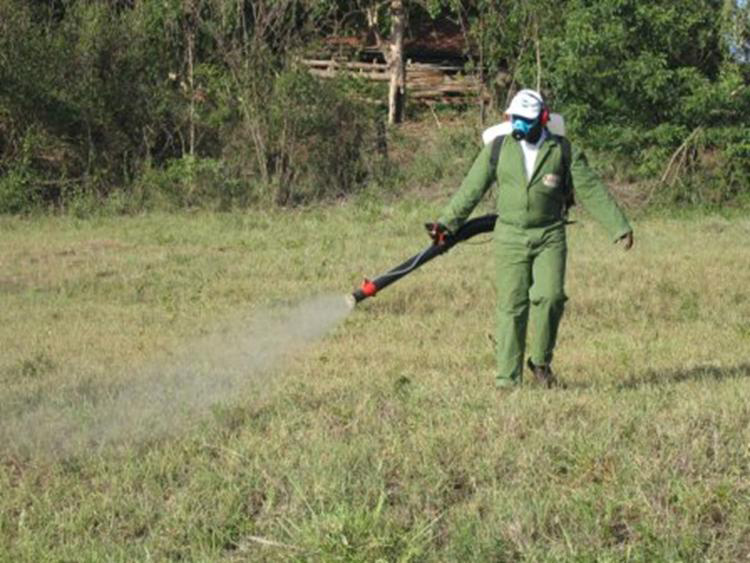Summary of Previous SpexNPV Research
 Summary of previous SpexNPV research
Summary of previous SpexNPV research
Previous research has shown the following
- SpexNPV is highly host-specific and so does not pose a threat to non-target organisms such as beneficial insects, livestock or humans (Cherry 1992).
- SpexNPV is just as effective as currently used chemical insecticides (e.g. Diazanon) when applied using either ground or aerial systems, achieving <90% kill rate (Grzywacz et al. 2007).
- Field-based production of SpexNPV in Tanzania is both feasible and affordable, costing approximately US$3 per hectare (Mushobozi et al. 2005).
- The proportion of armyworm outbreaks showing signs of overt viral disease at the beginning of the armyworm season is extremely low or zero whereas, in some years at least, it increases to nearly 100% of late-season outbreaks, when many armyworm outbreaks are effectively controlled by the virus.
- There is a strong positive relationship between larval population density and the prevalence of SpexNPV (Redman 2005), consistent with the hypothesis that the virus is being transmitted horizontally between caterpillars in a density-dependent manner (e.g. Anderson & May 1981).
- As larval density and virus prevalence increases, so too does the proportion of viral infections containing two or more virus genotypes (Redman 2005).
- Different virus genotypes (‘clones’) differ significantly in their pathogenicity to armyworm and mixed-clone infections were significantly more pathogenic than any single-clone isolate tested (Redman 2005).
- SpexNPV is widely prevalent in a “persistent”, non-pathogenic form that can be vertically-transmitted from parents to offspring (Vilaplana et al. 2008) (see virus transmission and persistence). In a host whose population is both migratory and subject to extreme fluctuations in numbers, the ability of a lethal pathogen to persist in a non-pathogenic form that can be passed vertically to the host’s offspring is key to its survival. This is both interesting and potentially an important characteristic that could be exploited in control, if its activation and persistence mechanism was better understood.
- Insects receiving a sub-lethal dose of the virus as larvae have an increased level of overt disease in their offspring, passed on to them primarily via trans-ovarial vertical transmission (Vilaplana et al. 2008).

